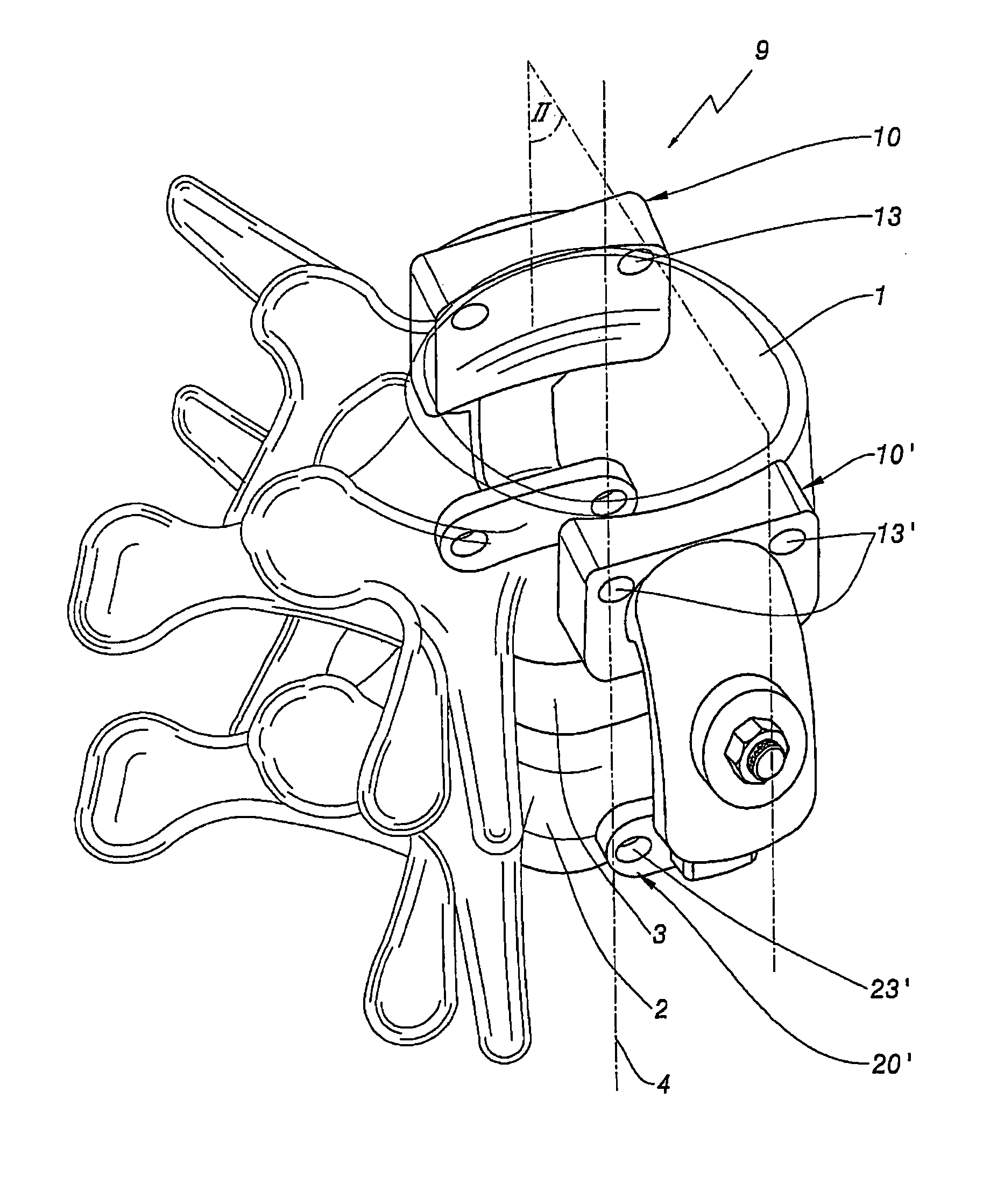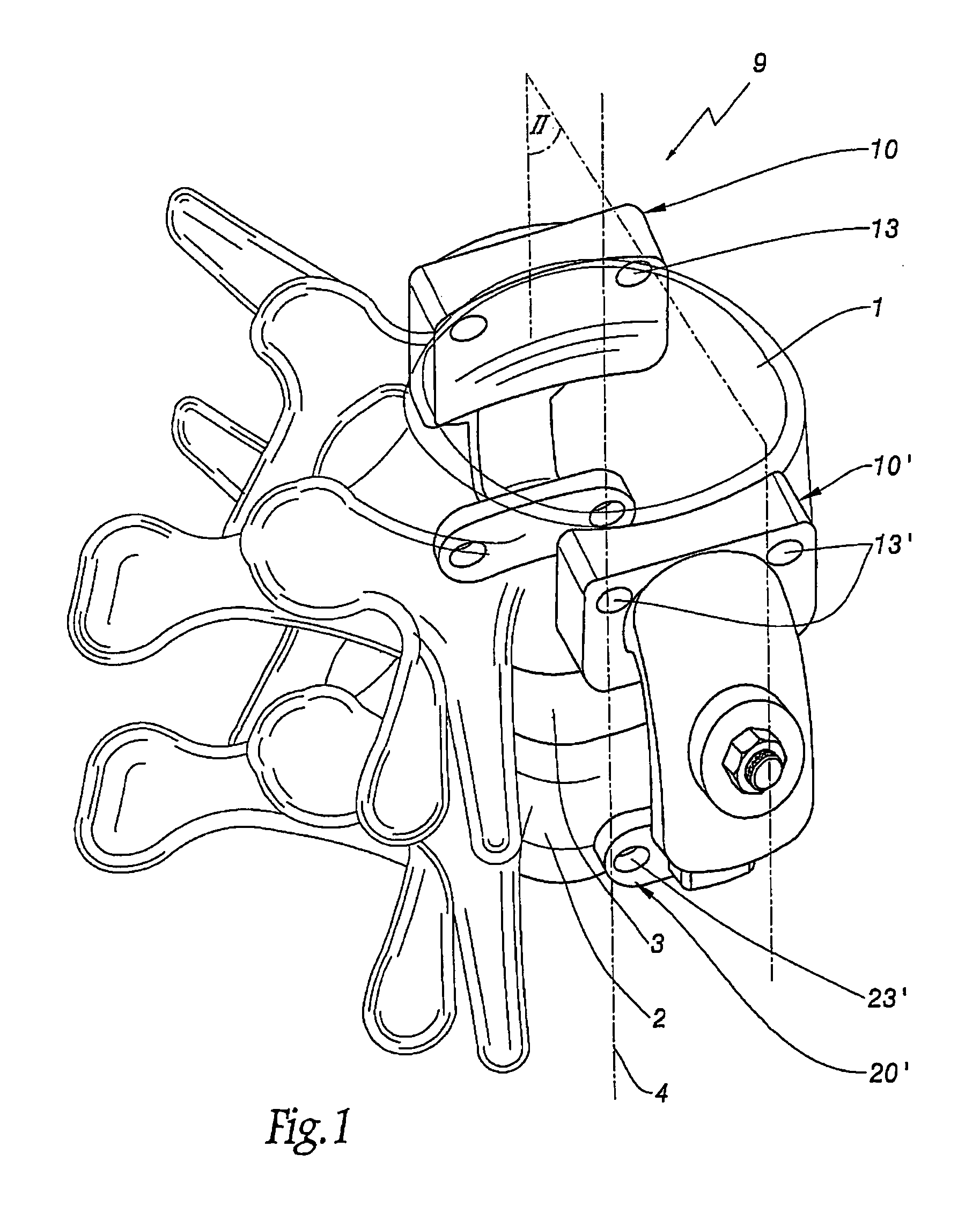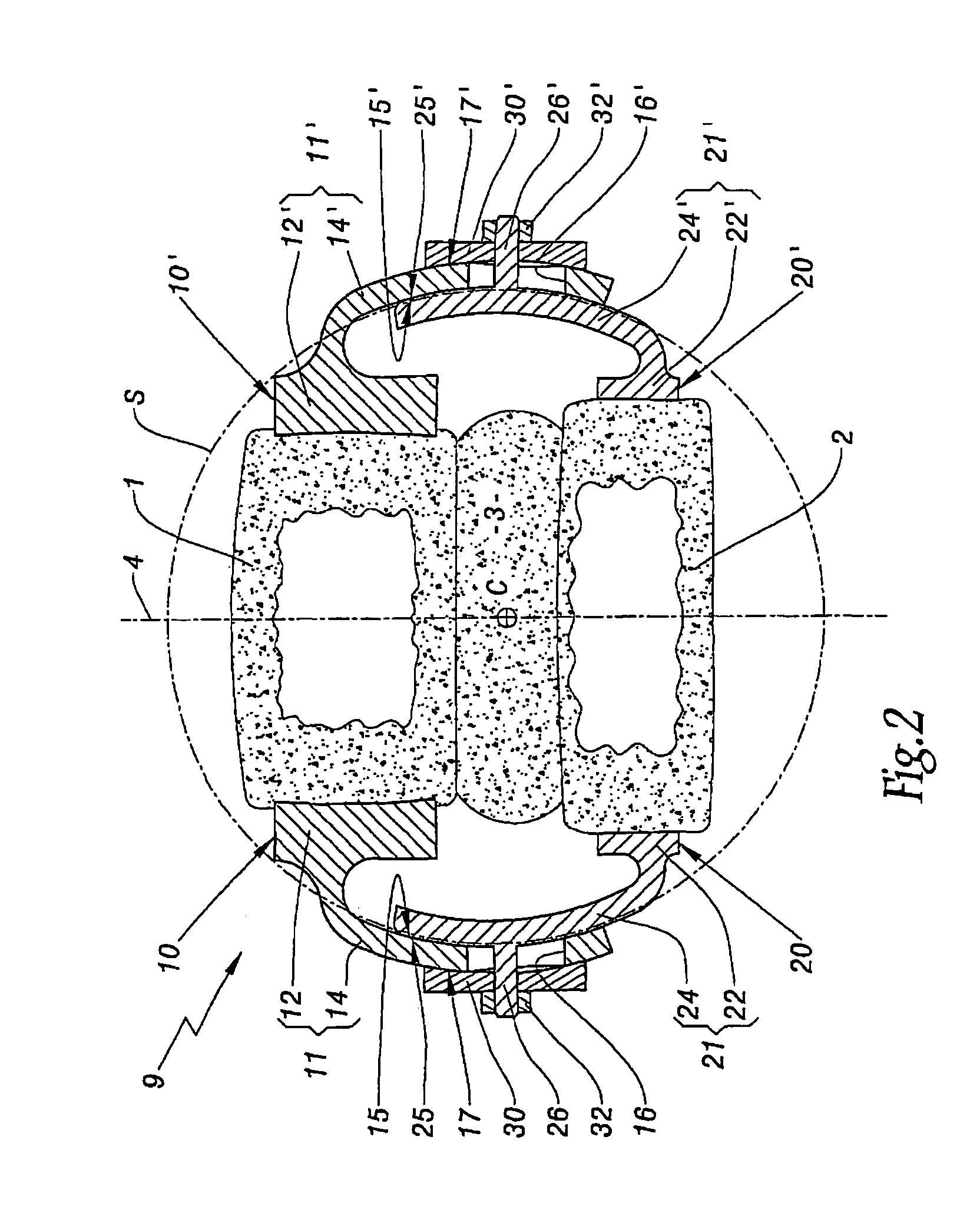Device for the lateral stabilization of the spine
a lateral stabilization and spine technology, applied in the field of lateral stabilization devices of the spine, can solve the problems of crushing or deformation, degeneration of adjacent disks, and inability to provide actual dynamic stabilization of the vertebrae, and achieve the effect of stabilizing the vertebrae and being more reliable over tim
- Summary
- Abstract
- Description
- Claims
- Application Information
AI Technical Summary
Benefits of technology
Problems solved by technology
Method used
Image
Examples
Embodiment Construction
[0027]FIGS. 1 and 2 show, in diagrammatic form, two adjacent vertebrae 1 and 2 of a lumbar spine of a human being, which vertebrae are separated by an intervertebral disk 3 according to the longitudinal direction 4 of the spine. For convenience, the remainder of the description is oriented relative to the vertebrae in their anatomical position, that is to say the terms “posterior” or “rear”, “anterior” or “front”, “right”, “left”, “upper”, “lower”, etc. are to be understood relative to the spine of the patient standing upright. Likewise, the term “sagittal” corresponds to a direction in the anteroposterior direction, vertically on the median line of the spine, while the term “medial” corresponds to a direction substantially perpendicular to the sagittal plane of the spine, directed towards the spine, the term “lateral” corresponding to the opposite direction.
[0028]FIGS. 1 and 3 show a device 9 for the dynamic stabilization of the vertebrae 1 and 2, which device is implanted on the l...
PUM
 Login to View More
Login to View More Abstract
Description
Claims
Application Information
 Login to View More
Login to View More - R&D
- Intellectual Property
- Life Sciences
- Materials
- Tech Scout
- Unparalleled Data Quality
- Higher Quality Content
- 60% Fewer Hallucinations
Browse by: Latest US Patents, China's latest patents, Technical Efficacy Thesaurus, Application Domain, Technology Topic, Popular Technical Reports.
© 2025 PatSnap. All rights reserved.Legal|Privacy policy|Modern Slavery Act Transparency Statement|Sitemap|About US| Contact US: help@patsnap.com



